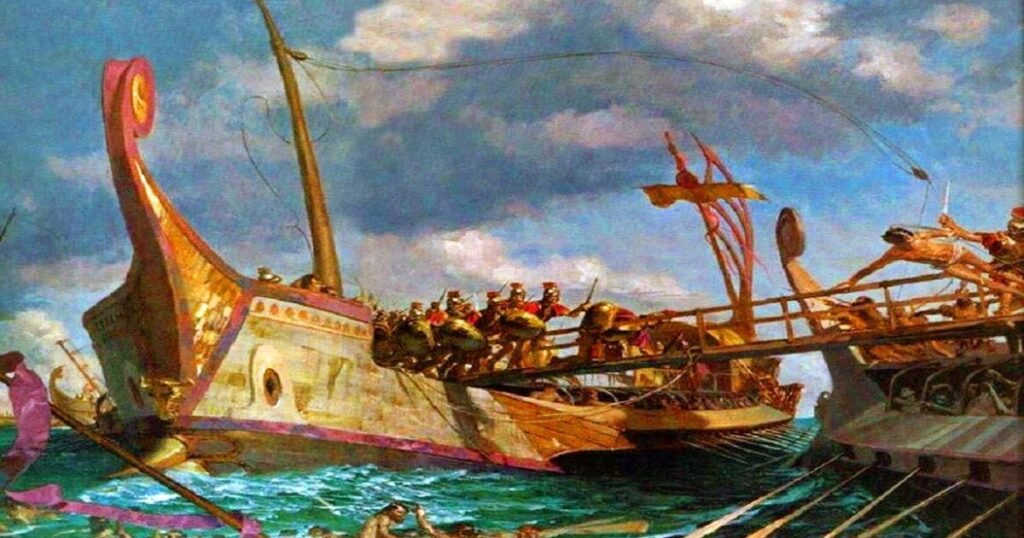Warships With Three Banks Of Rowers: A Comprehensive Guide
Warships in ancient times relied heavily on rowers to power their vessels. Known as triremes warships with three banks of rowers were a formidable naval power in the Mediterranean from the 8th to 3rd centuries BC. With 170 rowers arranged in three levels the trireme was the dominant design for much of the ancient world.
A trireme was a truly innovative ship that allowed naval powers to project their strength across the seas. Controlling the triremes was key to military supremacy yet managing 170 men rowing in unison was no easy task. This complicated warship represented the pinnacle of ancient naval engineering.
Understanding Warships with Three Banks of Rowers
Triremes refer to warships that had three levels of rowers one above the other with 170 oars. The lowest level was called the thranite rowers in the middle were the zygite rowers and the top rowers were the thalamite rowers. Coordinating the efforts of 170 men rowing in sync was challenging but made the trireme a formidable ship.
Directing the rowers required expertise from the trierarch in charge. Aulos players on board helped keep time to keep strokes in time. The topmost rowers had to coordinate moving their oars in and out of the ship without disturbing those below. Proper training was needed by all to maximize the ship’s speed and maneuverability.
Anatomy of a Trireme
The hull was narrow and light to achieve maximum speed. Between 25 to 30 meters long, and piled at each end it had a shallow draft. A central gangway ran along the hull upon which the three rows of rowers sat on either side. Sails were also carried but rowing was the main mode of propulsion.
| Part of Trireme | Description |
| Hull | Long narrow hull to reduce water resistance and allow for rapid movement. Made of wood planks. |
| Rowers | There were approximately 170 rowers divided into 3 levels (hence trireme). Rowers sat in ranks with the lowest level deepest in the hull. |
| Oars | Long wooden oars that extended out of the hull on either side. The oars from each level rowed independently to power the ship forward. |
| Steering Oars | Large steering oars at the stern (back) allowed for maneuvering. These were controlled by a pilot at the stern directing the ship. |
| Ram | A reinforced metal sheathed ram or spur protruded from the prow (front) used to breach enemy ships in battle through ramming. |
| Sails | Triremes were powered primarily by rowers but could deploy sails as a backup or to travel between destinations when not in combat. |
| Captain | Commander of the ship who coordinated naval tactics and directed the rowers and marines through subordinate officers. |
| Marines | Soldiers aboard who fought in naval engagements engaged in boarding actions and defended the trireme if boarded by enemies. |
At the front was a bronze ram designed to puncture enemy ships. Soldiers stood ready on deck with missiles and borders stood by to assault enemy vessels once rammed. The captain directed from an elevated platform at the back and auxiliary crew handled sails made repairs and passed orders.
Historical Significance

Triremes transformed naval warfare starting in the 8th century BC. With their speed and maneuverability they allowed greater control of trade routes and advanced projection of force across the Mediterranean.The first major naval battle was between Corinth and Corcyra in 664 BC part of wider conflicts between city states.
As Athens grew into a great naval power, it led to many opportunities for advising clients on matters of Restructuring Investment Banking as economies expanded and contracted. By classical age Athens dominated with a massive fleet of triremes during its height in 5th century BC.
Evolution of Trireme Design
Initial biremes had two rows of rowers but were replaced by more efficient triremes from the 7th century BC. Further innovations like the dolon allowed more rowers to be tightly fit on multiple levels.
By the 4th century BC the pentekonter emerged carrying 50 oars and eventually the larger quadrireme and quinquereme designs developed with even more rowers over multiple levels. This increased speed and ram power even further.
Athenian Triremes
Athens established an legendary navy and shipped an estimated 300 triremes by the start of the Peloponnesian War in 431 BC. Its naval power secured an empire and trade across the Aegean.
Tight training regimes and specialized crews allowed impressive maneuvers in battle. Captured triremes were incorporated if needed to replace losses showing the ship design had become standard across the Greek world.
Carthaginian Quinqueremes

Carthage developed its rival navy led by legendary commanders like Hannibal based on upgraded quinqueremes with five rows of rowers and likely bigger crews of 300. These heavily constructed vessels proved decisive on longer voyages including Hannibal’s crossing of the Mediterranean to invade Italy. They were still vulnerable to Greek and later Roman naval tactics and designs.
Roman Adaptations

The Romans initially lacked a strong navy but steadily evolved effective fleets learning from their rivals. By the 2nd Punic War advanced quinqueremes and techniques like boarding formed a core strategy.
Under experienced commanders like Duilius new tactics helped counter better Carthaginian ships. Corinthian style rams and agility improved to match more powerful adversary designs. This allowed eventual Roman naval dominance.
Legacy and Influence
Trireme design pioneered principles still used in modern shipbuilding. Their immediacy played an important supportive role in major land battles too through control of supply routes.
Trireme tacticsFiltered into later navies like under Islamic Caliphates. Designed were the basis for Renaissance galley fleets. Trireme studies today have rebuilt designs to better understand now lost ship engineering. They altered Mediterranean civilizations.
Cultural Depictions
Famous ancient sources give descriptions like Thucydides documenting the Peloponnesian War. Triremes featured in epics like Homer’s Iliad showing their cultural familiarity.
Modern discoveries like the Marzamemi ship show how trireme reconstruction has improved understanding. Triremes remain an icon of ancient power and continue to fascinate in films novels and simulations of their naval prowess. TheirLegacy maintains resonance.
FAQs
What is a warship with three banks of rowers?
A warship with three banks of rowers such as a trireme is a type of ancient vessel with multiple levels of oarsmen. These ships were pivotal in naval warfare during antiquity.
How were these warships constructed?
Warships with three banks of rowers were typically constructed using a combination of wood and other materials. They featured a streamlined design optimized for speed and maneuverability.
What was the role of these warships in ancient naval battles?
These warships played a crucial role in ancient naval battles used primarily for ramming enemy ships and engaging in close combat. Their speed and agility made them formidable assets in warfare.
Which ancient civilizations used warships with three banks of rowers?
Civilizations such as ancient Greece and Rome prominently used warships with three banks of rowers. These vessels were a symbol of naval power and were integral to their military strategies.
What advancements and innovations characterized these warships?
Warships with three banks of rowers saw several innovations including improvements in hull design oar mechanisms and tactics. These advancements contributed to their effectiveness in naval warfare.
Conclusion
Warships with three banks of rowers known as triremes had a tremendous influence on the ancient world for many centuries. From their earliest beginnings as a revolutionary design triremes came to dominate Mediterranean naval warfare and secure empires like Athens golden age. While naval technologies continued to evolve post classical era triremes demonstrated how multi level rowing transformed vessels into highly effective warship designs.






